24 Feb 2019
Good morning, jungle!
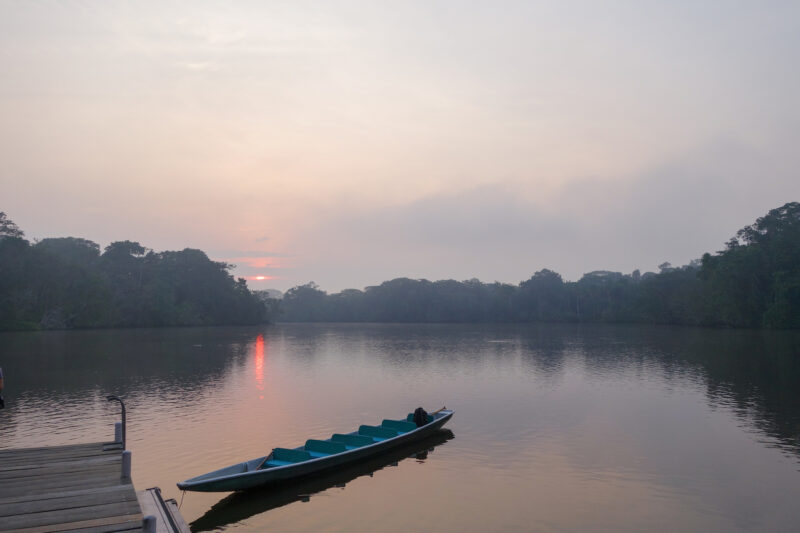
Good morning, grasshopper!
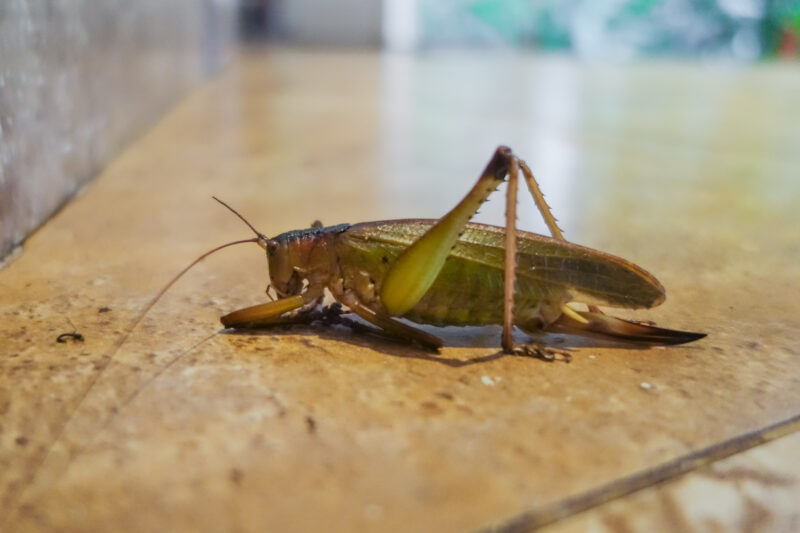
We got up bright and early to head out to a clay lick to hopefully see some parrots:
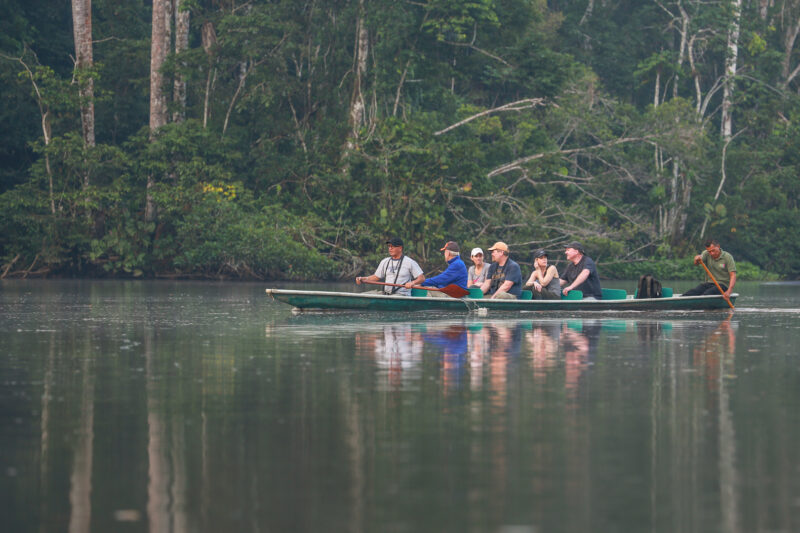
Parrots!!! and Parakeets!!! Look at them all!!!
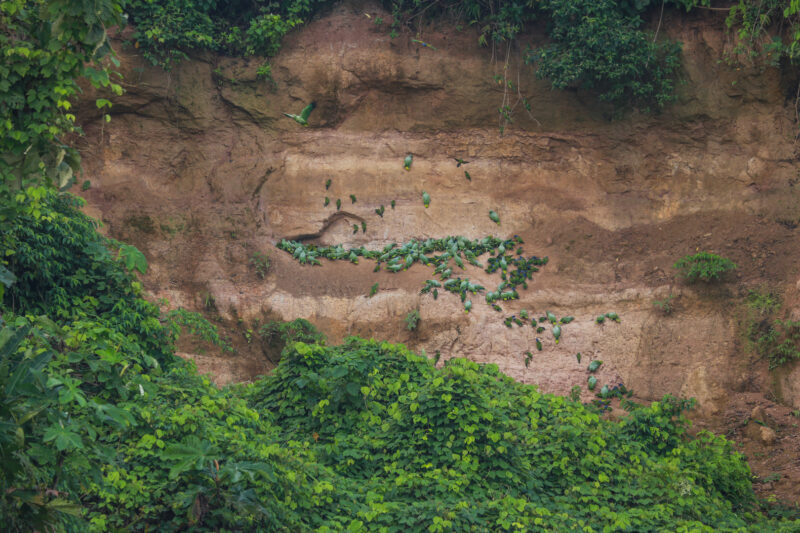
A parrot’s diet is mostly fruit, so these clay deposits offers the birds essential vitamins and nutrients that they would otherwise not get in their diets
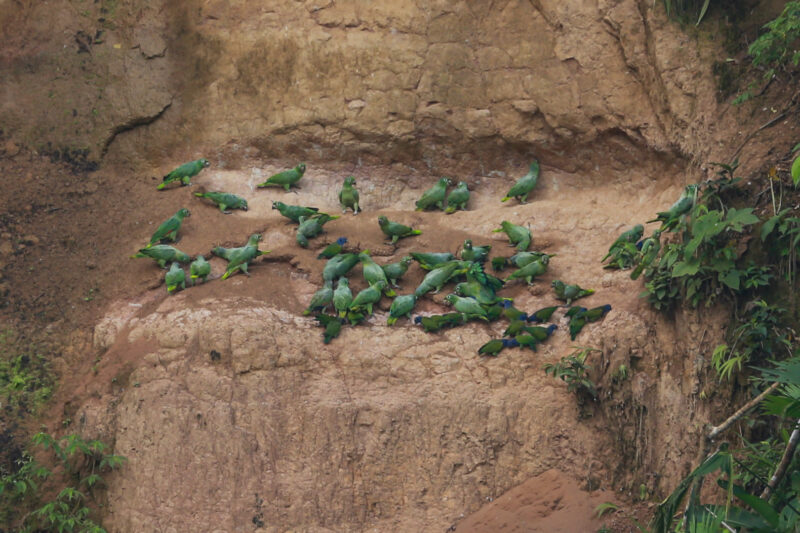
As fruits tend to be more acidic, the higher pH of the clay helps balance the acids as well
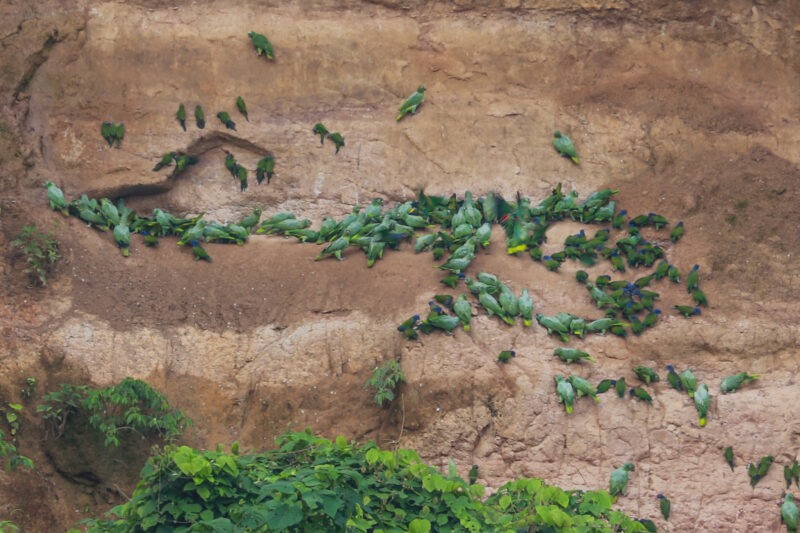
Mealy parrots:
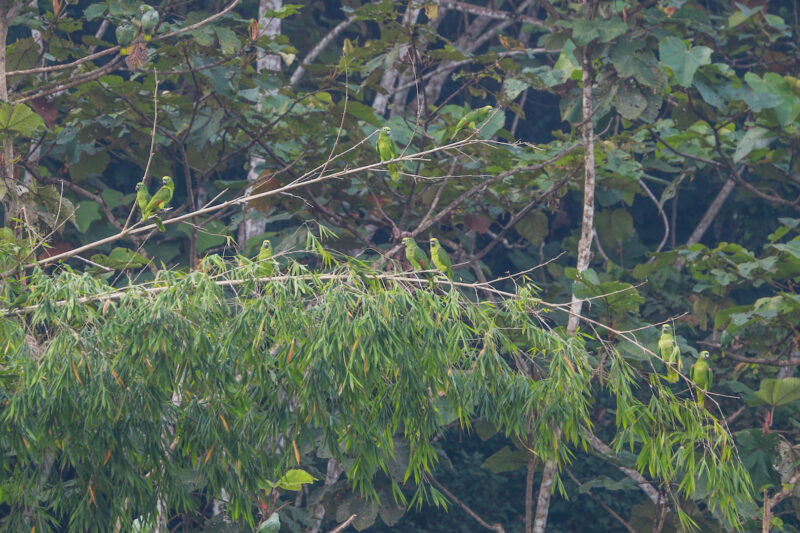
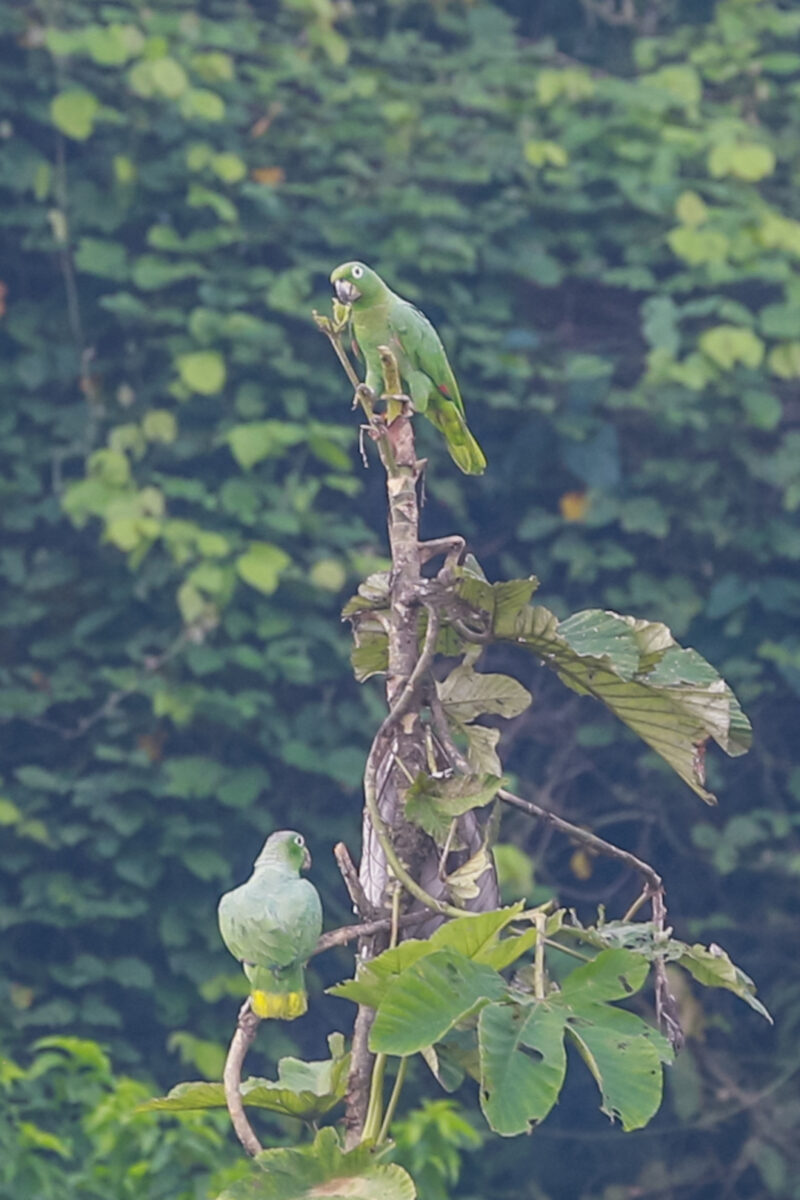
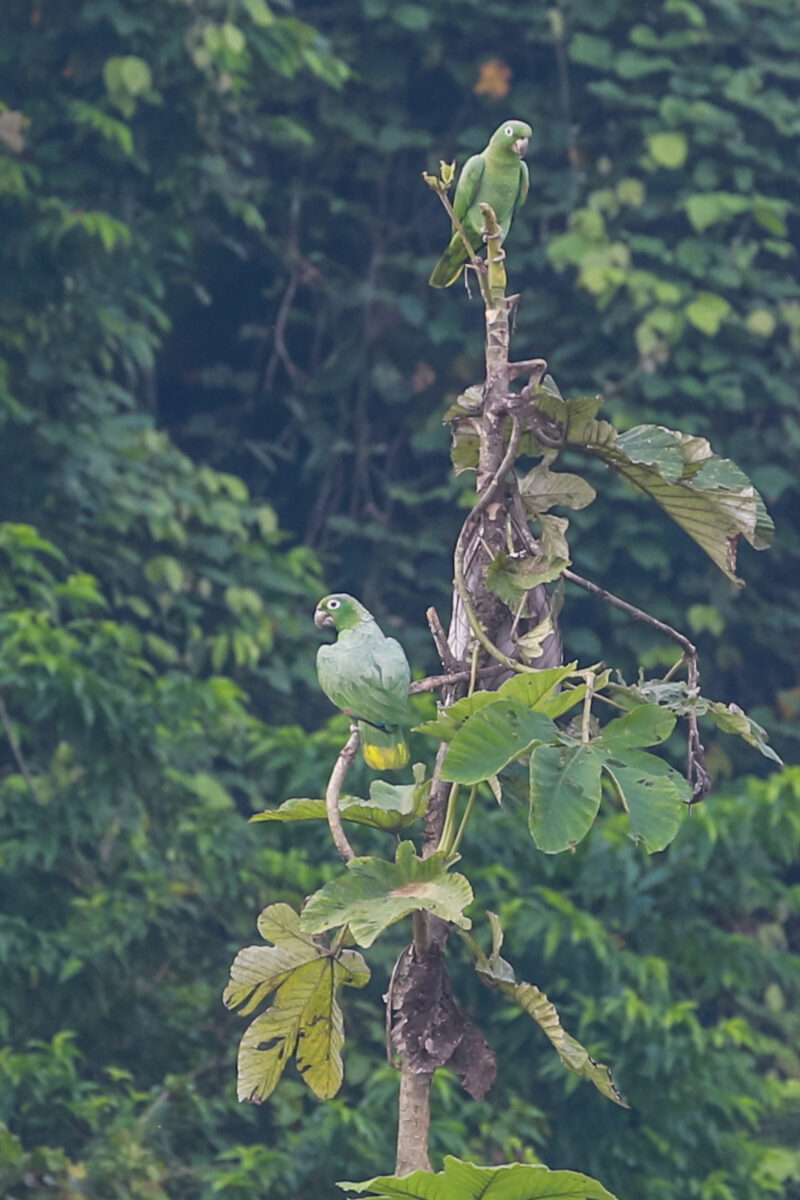
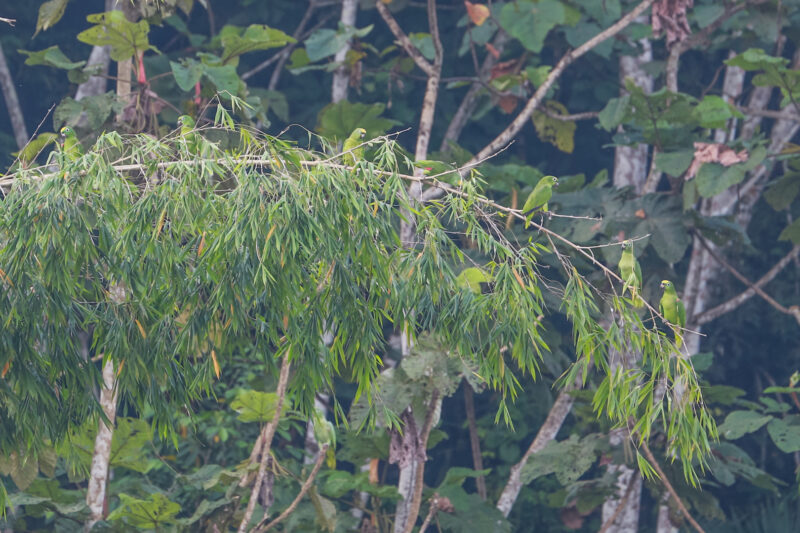
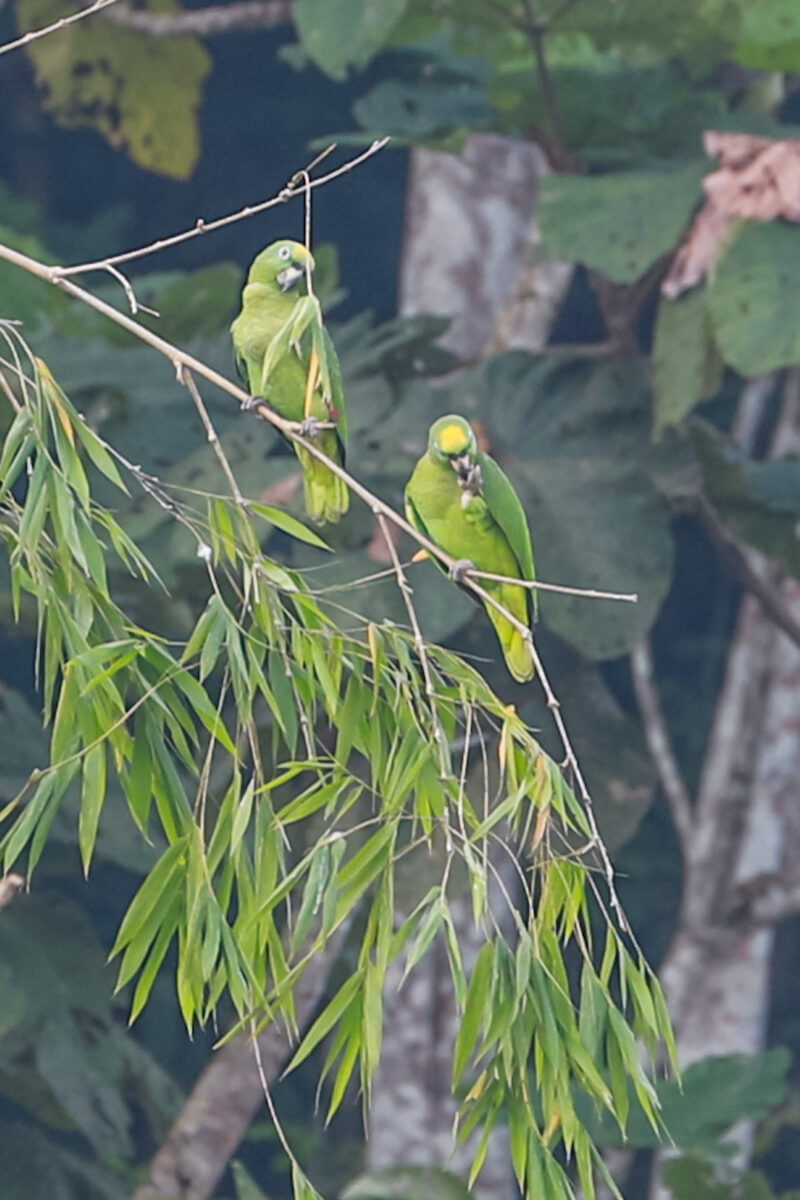

Howler monkey:
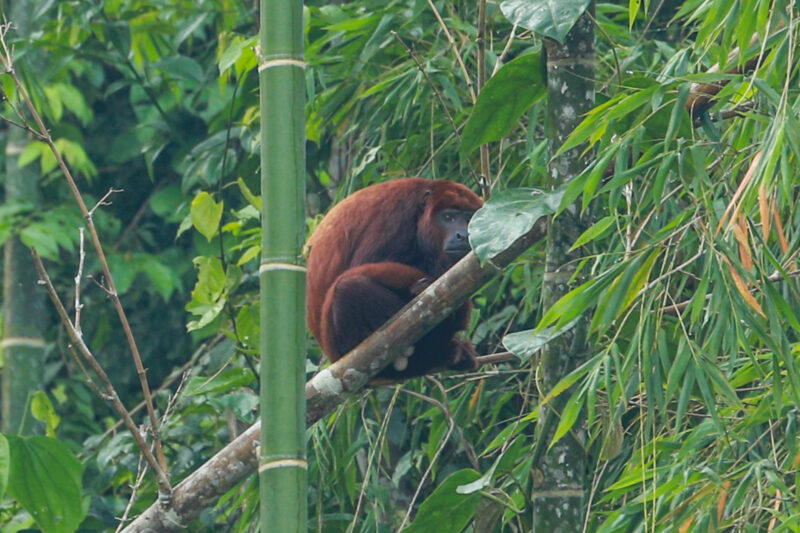
We were zipping down the river when our guide spotted him from the boat!
Next stop, Yasuní, a national park where we were hoping to find more birds and maybe some fun mammals as well:
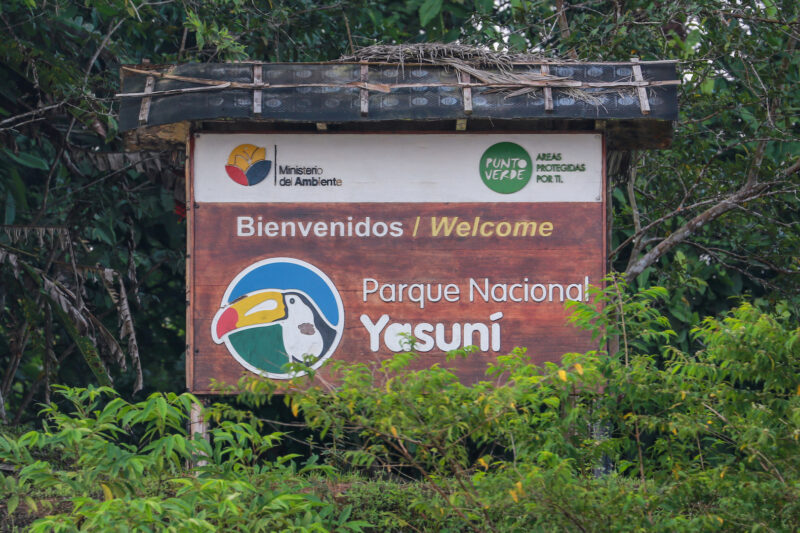
They wouldn’t let our whole group go over at once- it’s a one or two person at a time kind of bridge:
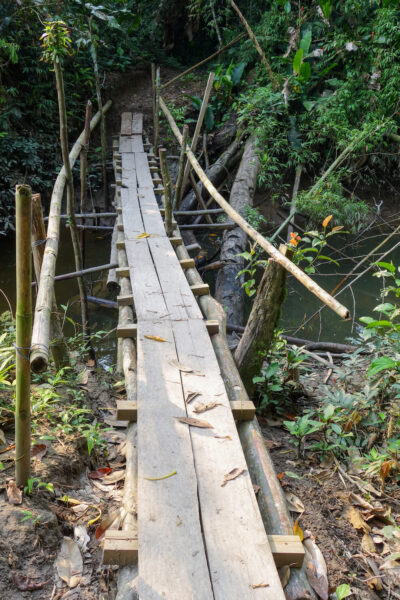
Machete. Ax. Everything you need to make jungle paths:
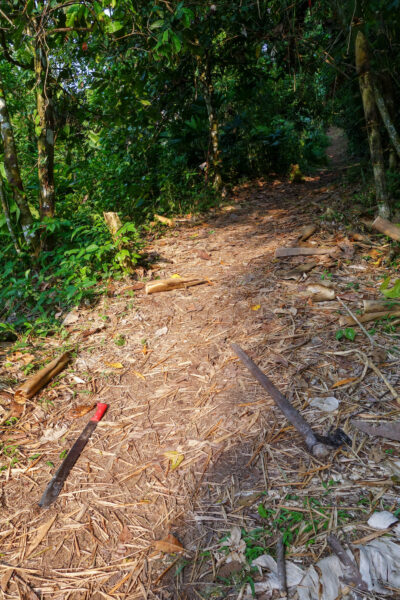
Hiking through the jungle to get to the blind:
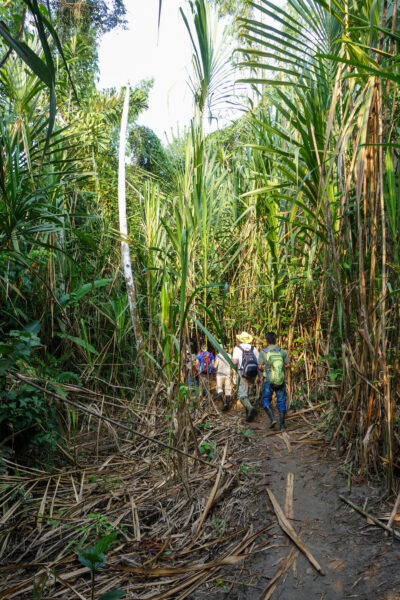
Along the way we found an owl!
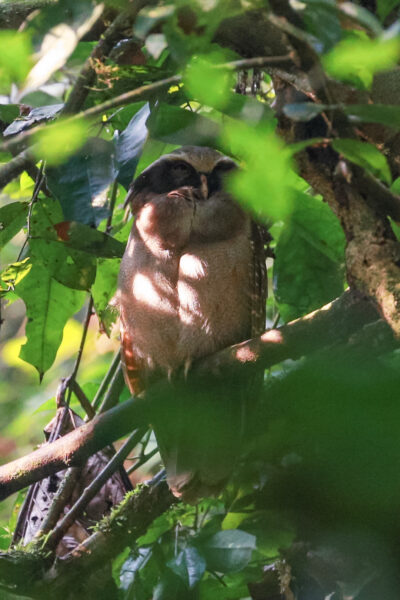
Two of them, actually!
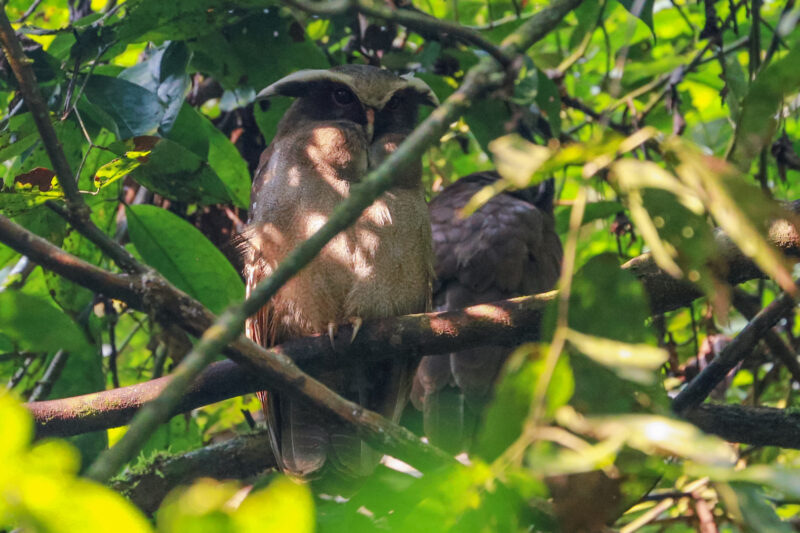
Some parts of our path were a bit more navigable that others:
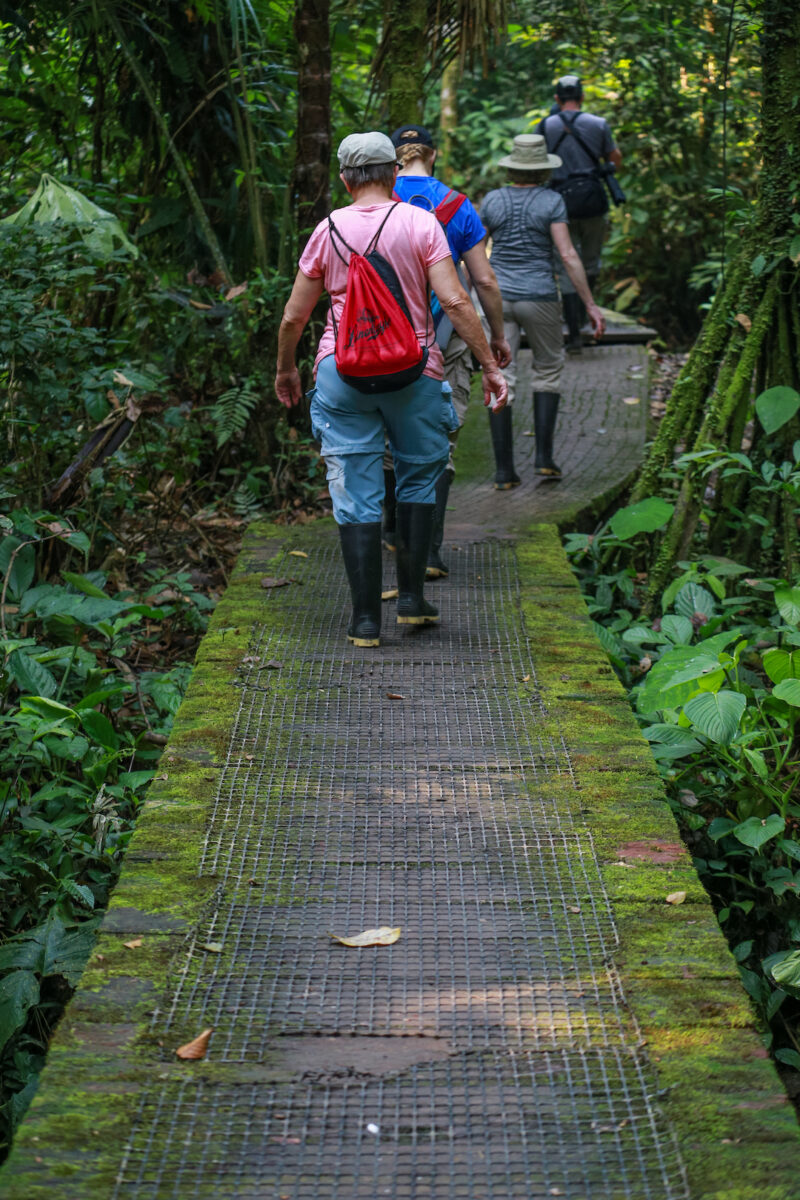
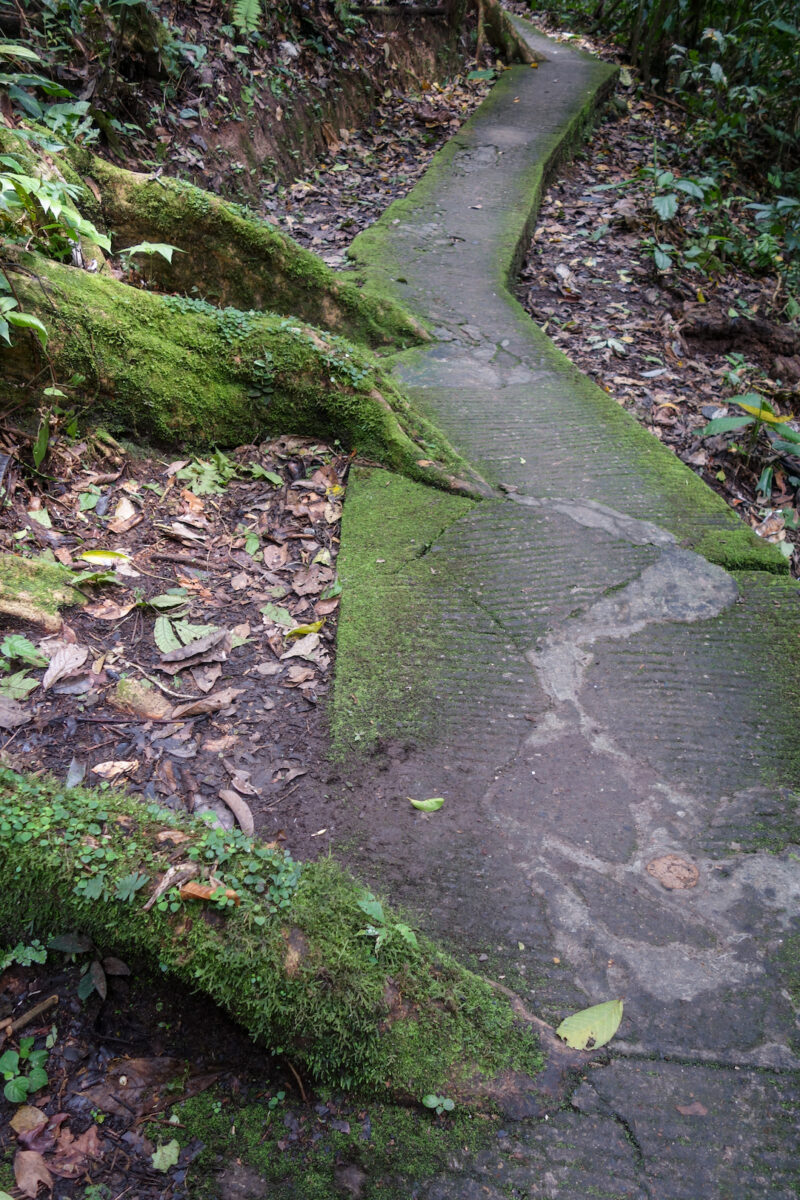
Sitting in the blind, waiting for more birds:
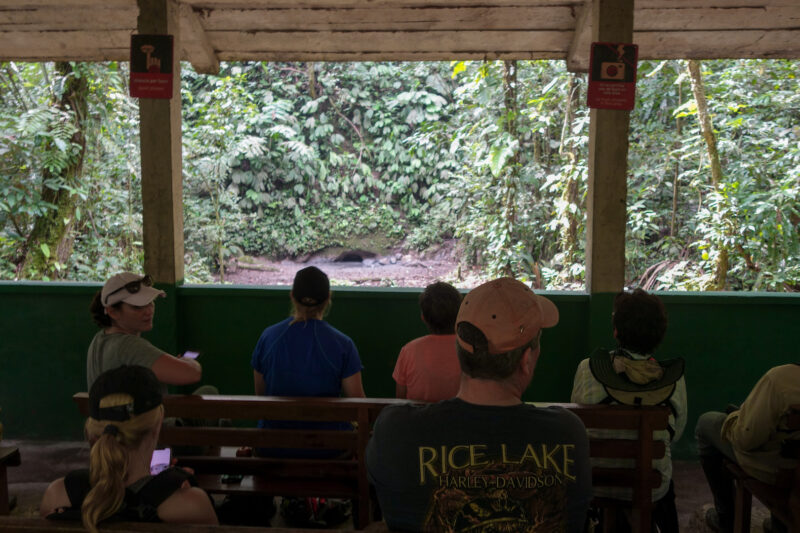
Scarlet Macaw:
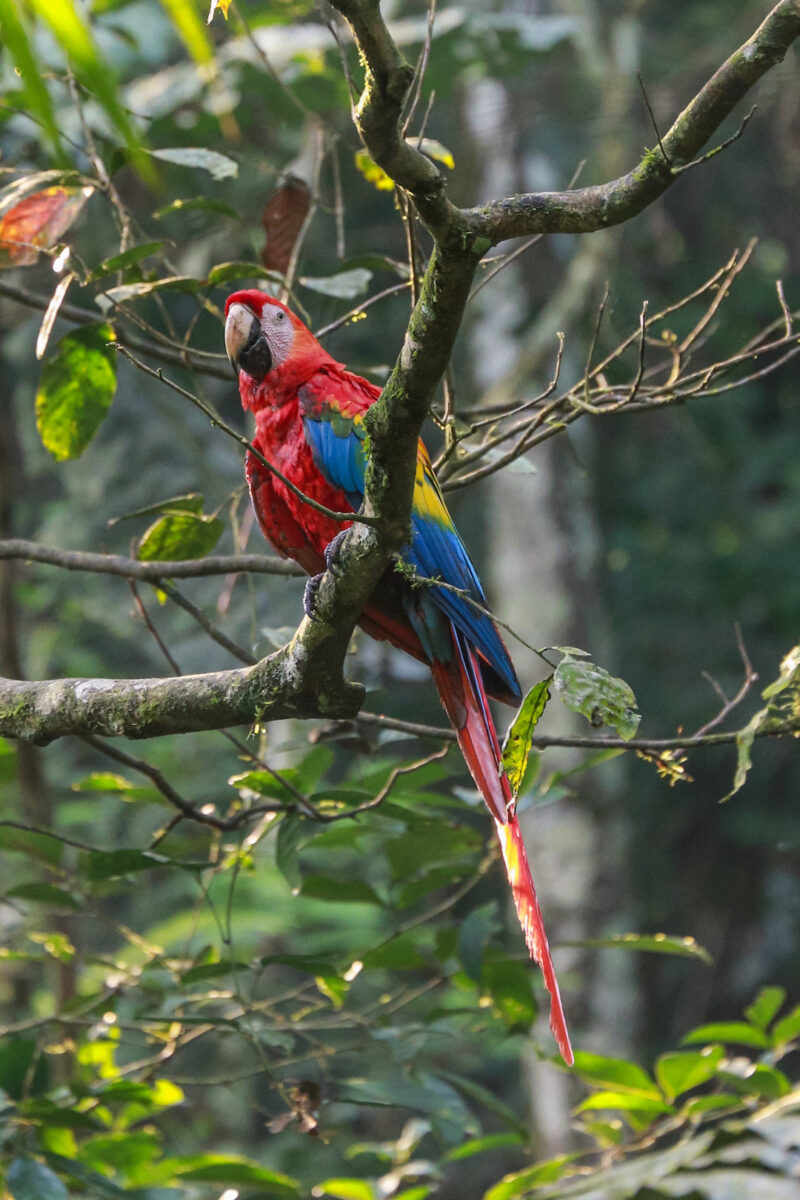
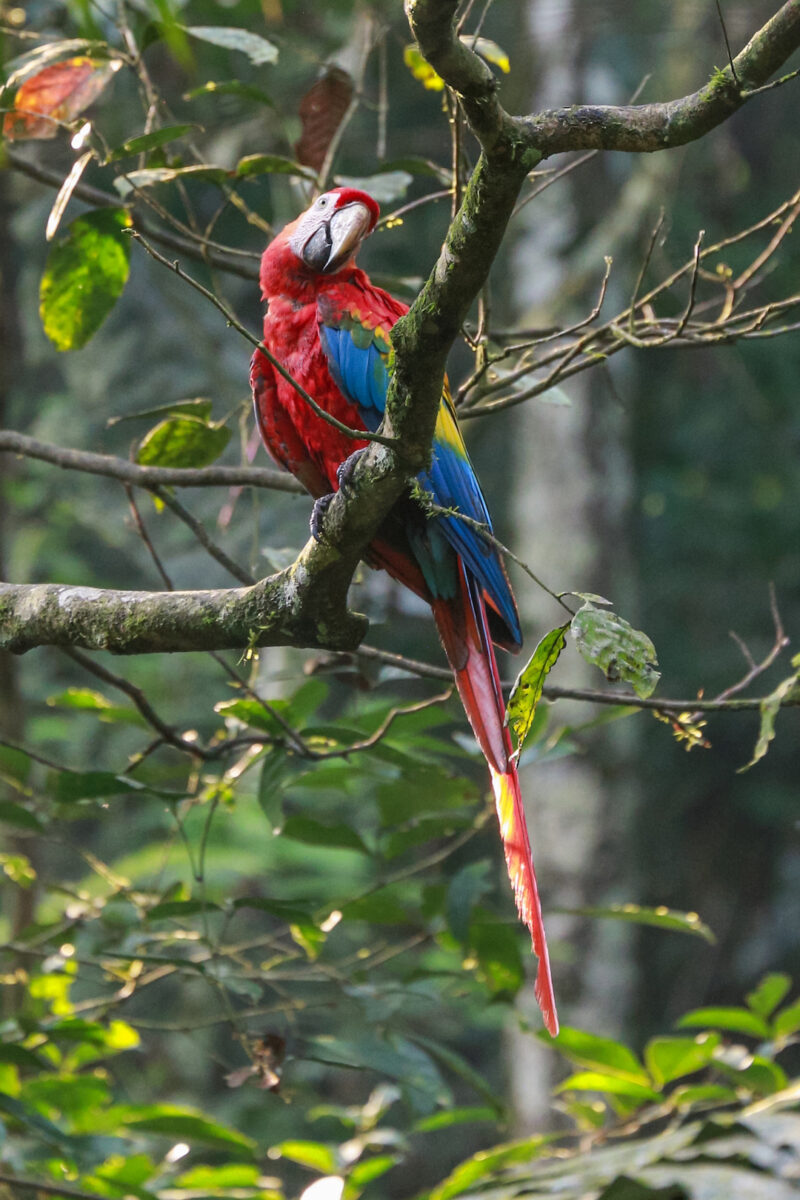
Getting ready to fly away 🙁
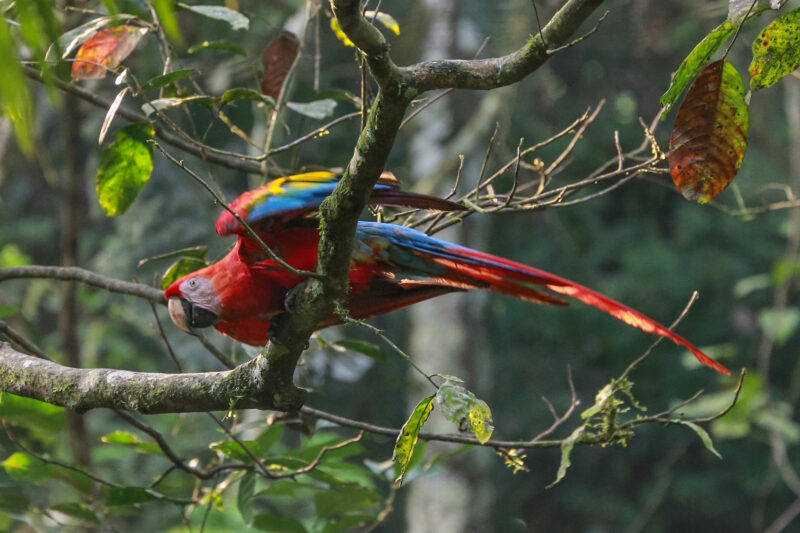
Orange-cheeked parrot:
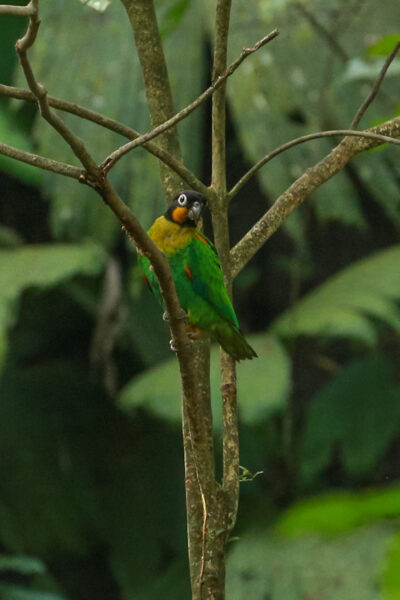
Ruddy pigeon (ok, so he’s super common, but still- a bird!):
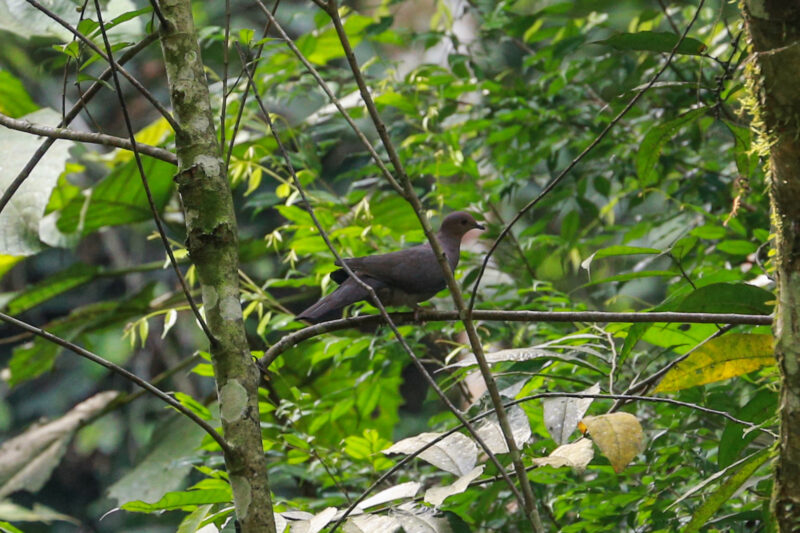
A bunch of peccaries!
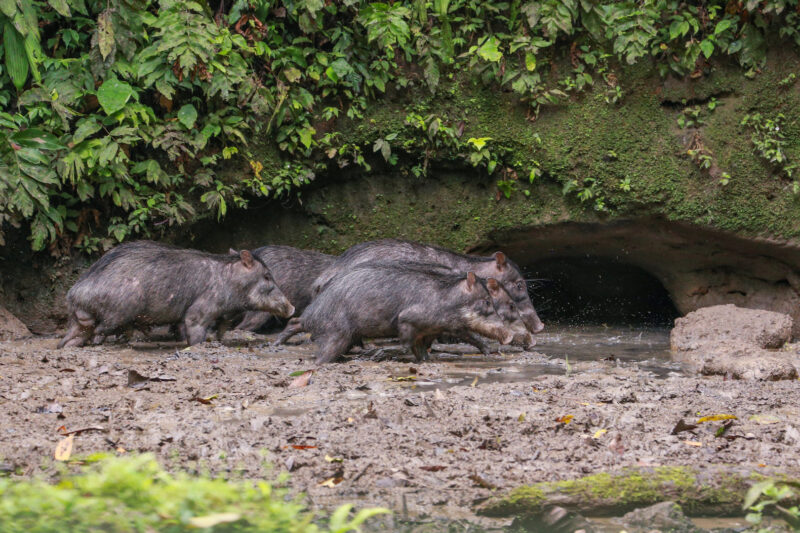
A herd of several dozen came through!
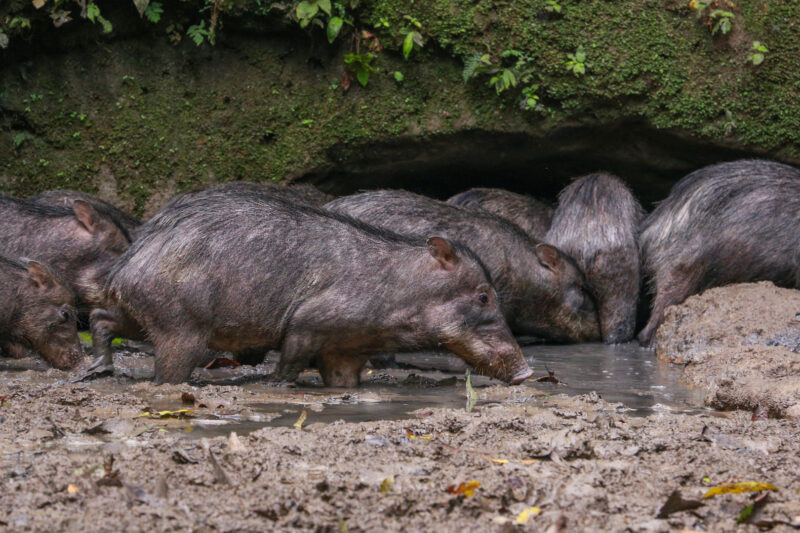
Look at them all!
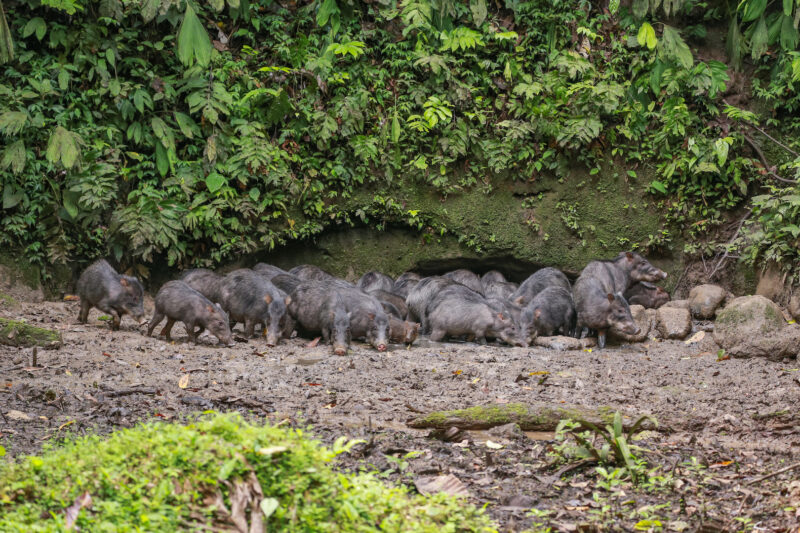
Hello there!
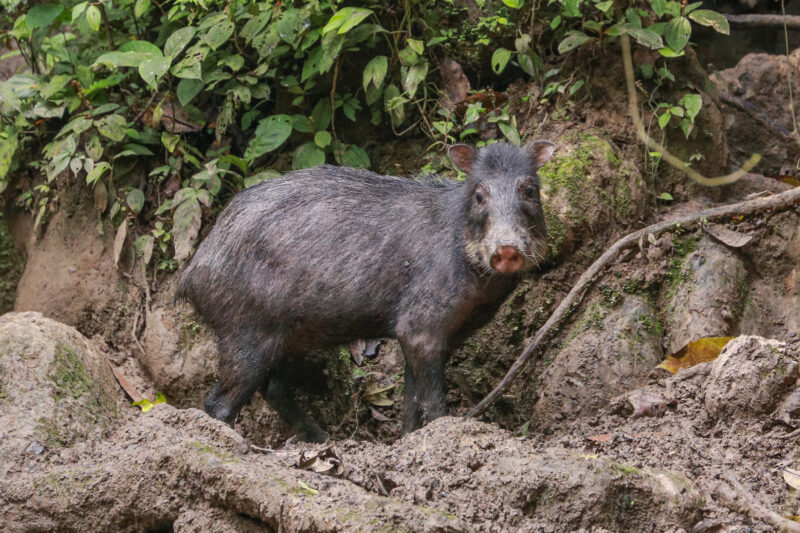
All trying to get into the mud:
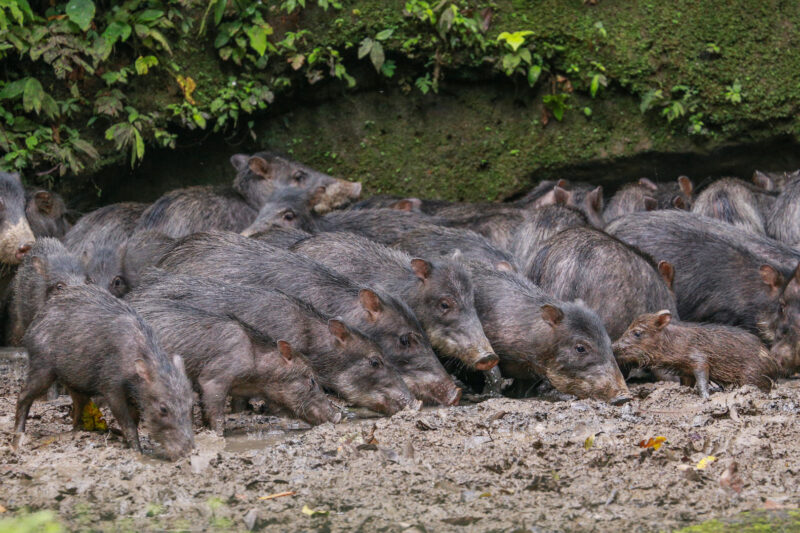
Look at that little guy!
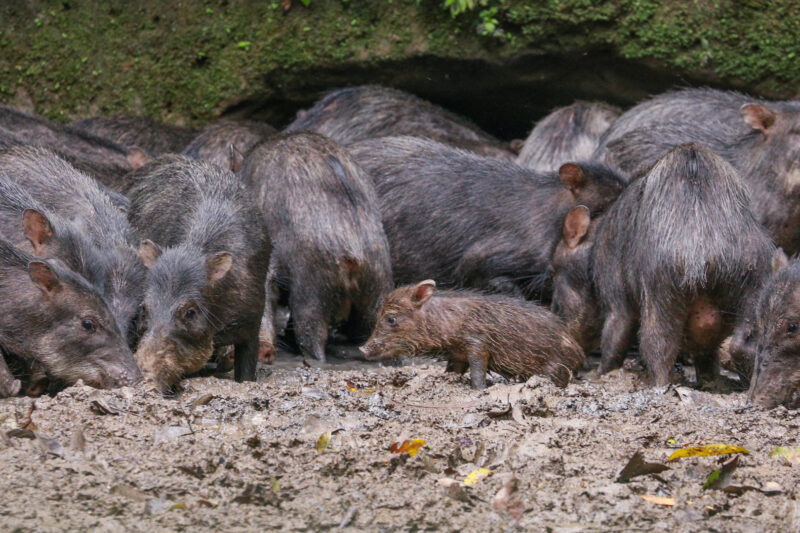
mmm…. mud…
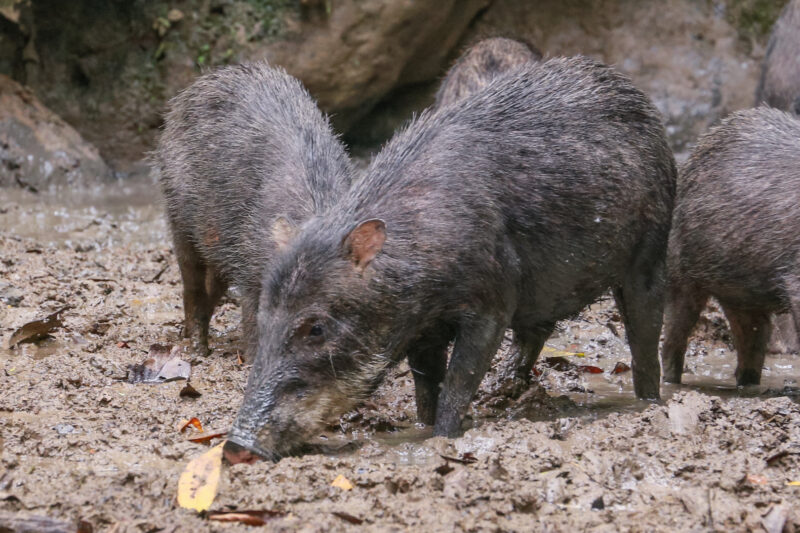
They were seriously stinky though, and made the birds wary (it took about an hour for the birds to come back down) so I eventually went exploring behind the blind:
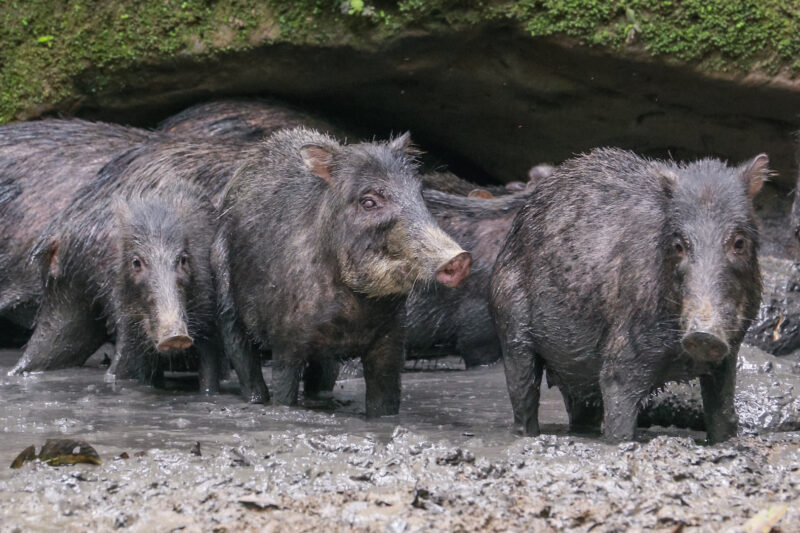
Scorpion spider (on the ceiling of our blind- I made sure there were none above where I was sitting and hoped this guy was content in his corner):
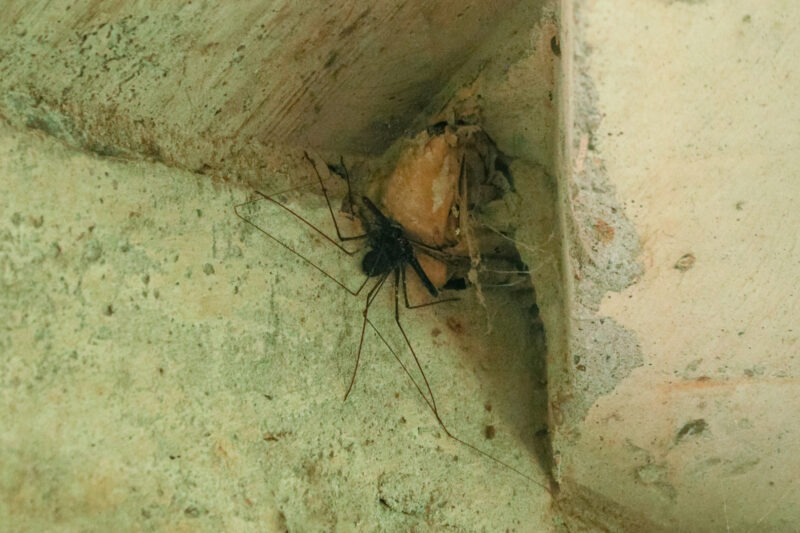
Praying mantis!
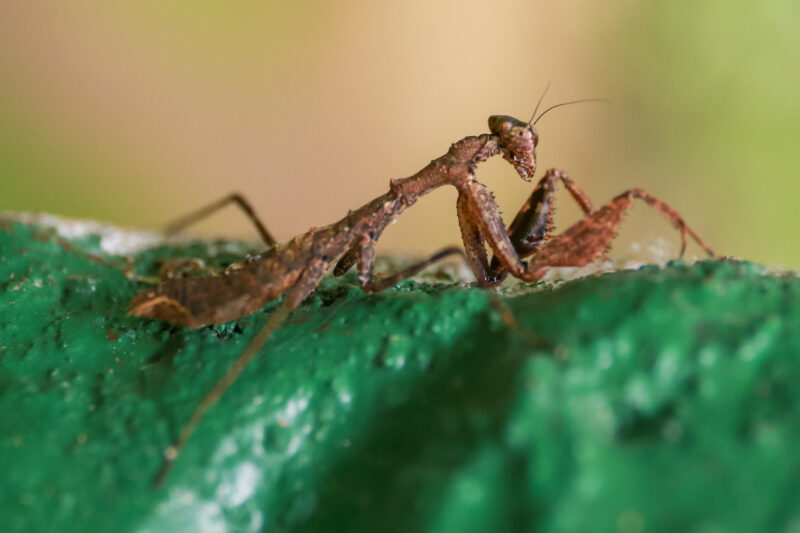
Poor butterfly! Getting eaten by a spider:
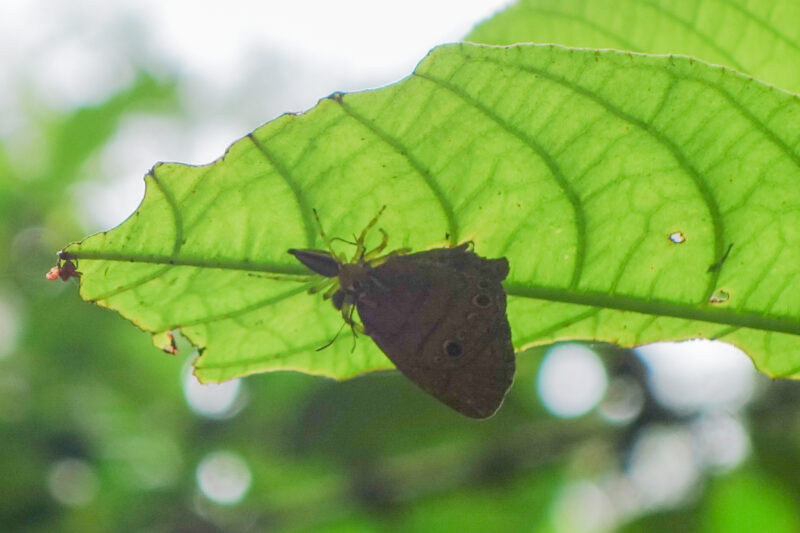
An alive butterfly:
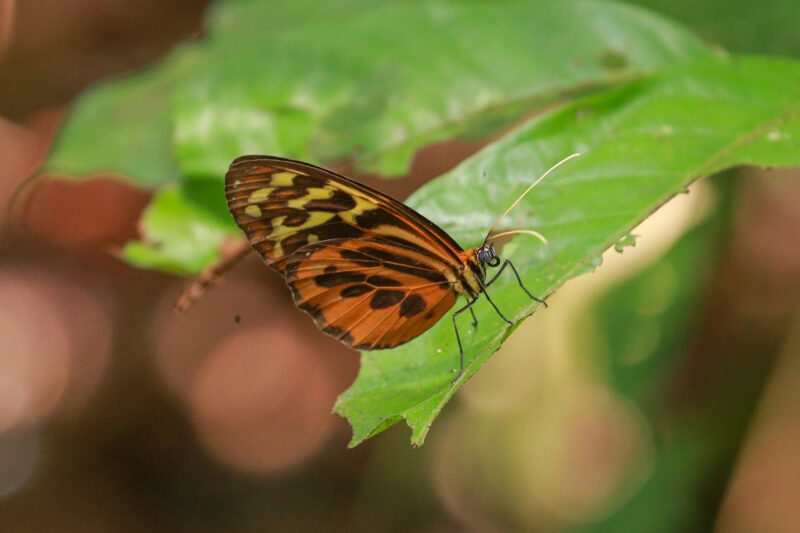
Spiky plant:
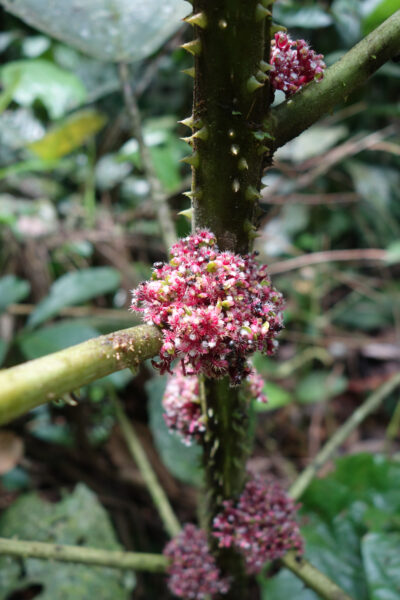
A few parrots finally got brave enough to come back down:
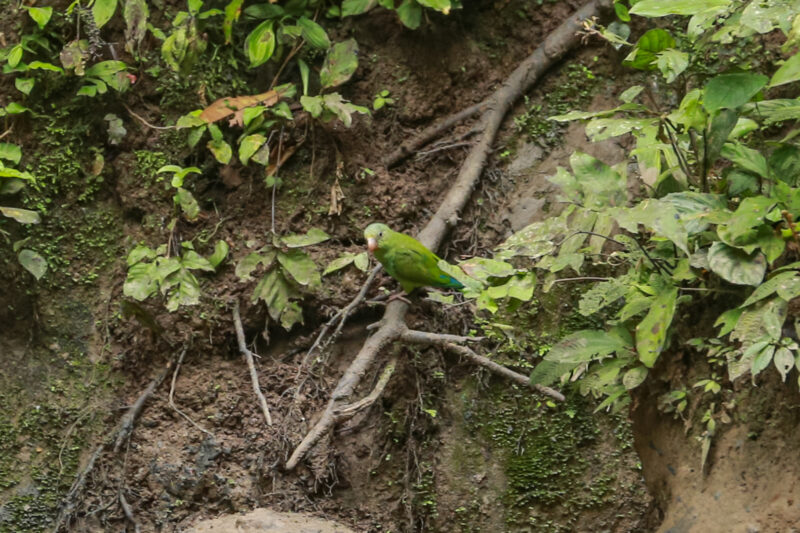
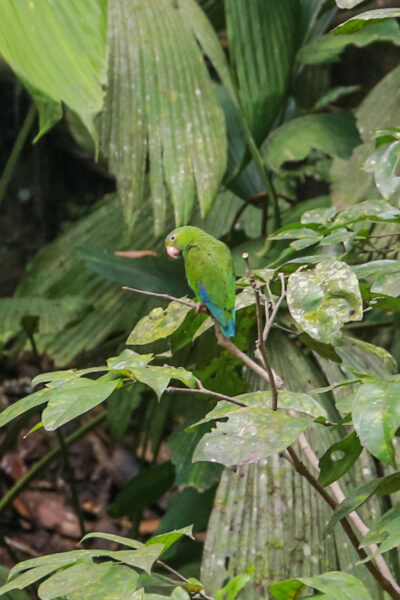
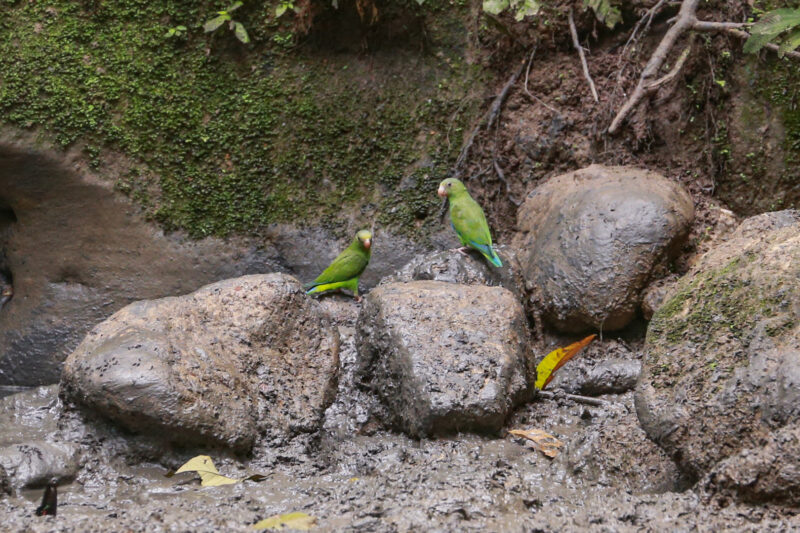
Our next stop was to Mandi Wasi, a village that was set up in the native fashion. It’s run by the women of the community and helps bring in income for their families:
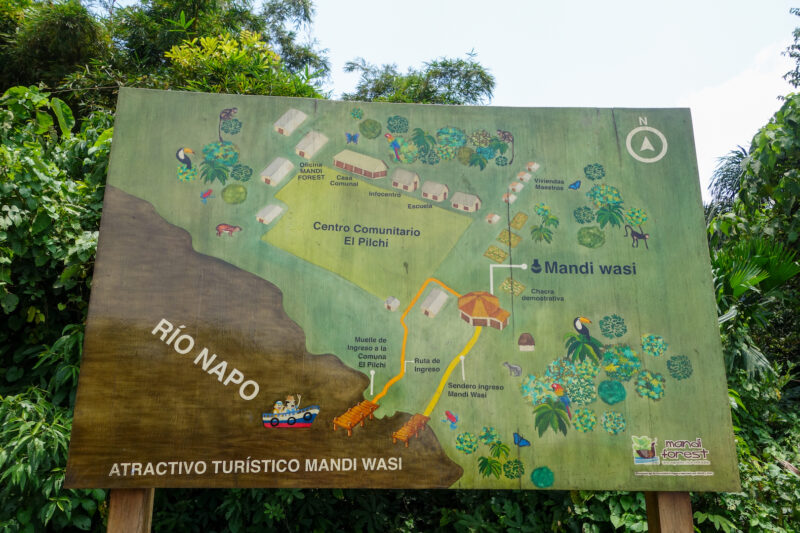
Traditional houses:
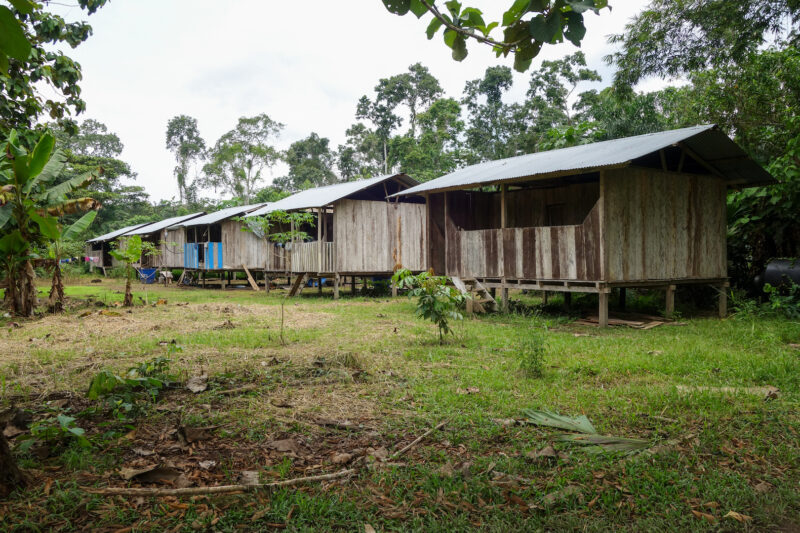
Cutting the grass using a machete:
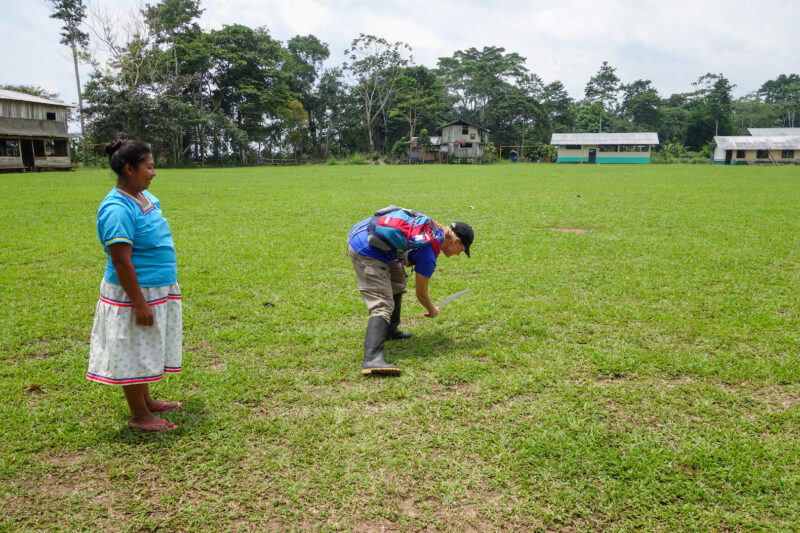
On the board in one of the classrooms- Kichwa (the native language), Spanish and English:
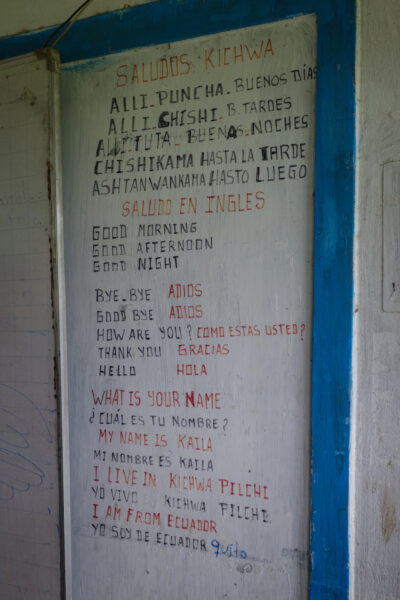
Soccer field surrounded by community buildings:

Hiking under giant bamboo:
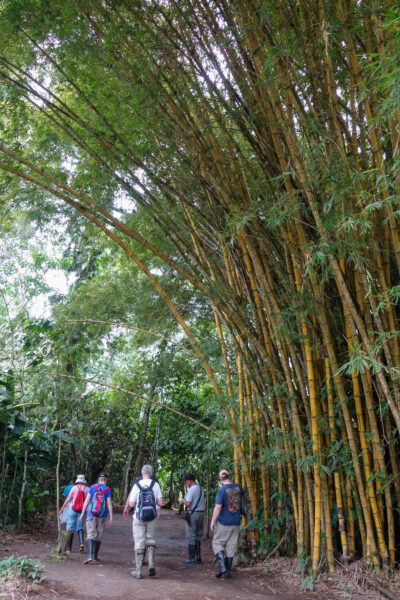
Cacao pods!
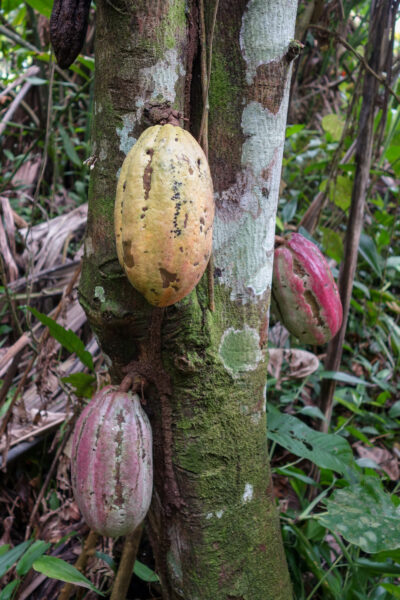
Inside a cacao pod (the white part is fleshy and surrounds a seed):
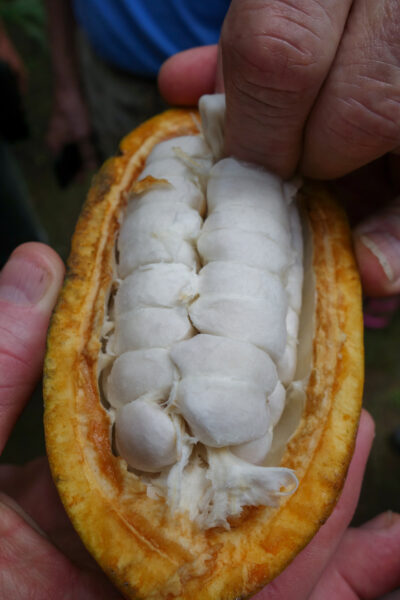
Blow gun! I totally hit the target on my 2nd try!
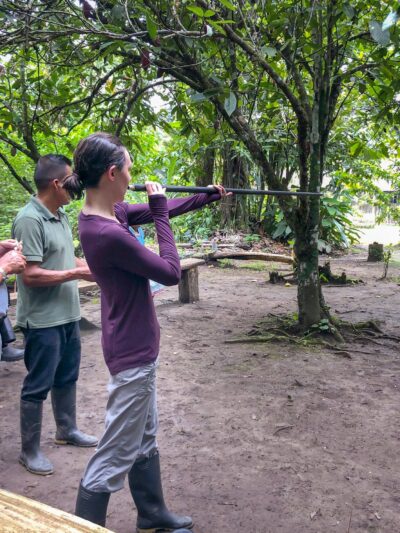
Photo by Summer Marsh
This is Martina, our guide of the native village. She’s explaining how the kitchen works, and the foods they cook:
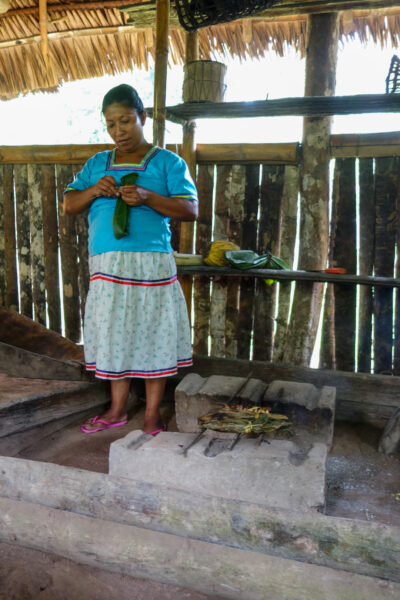
A sampling of foods: heart of palm, yuca, a nut I’m totally forgetting the name of, palm weevil grub, banana, plantain. And yes, I ate them all. Including the grub (I actually ate 2 of those ![]() ):
):
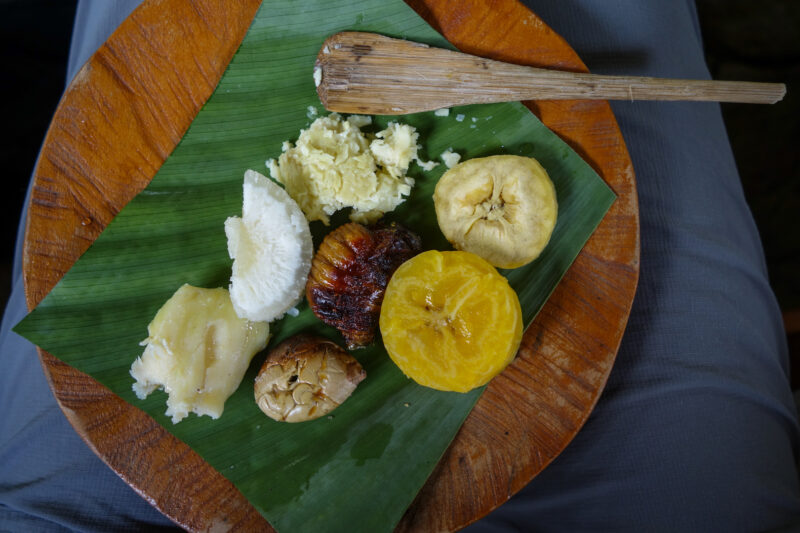
Stack of turtles on our way back to the lodge:
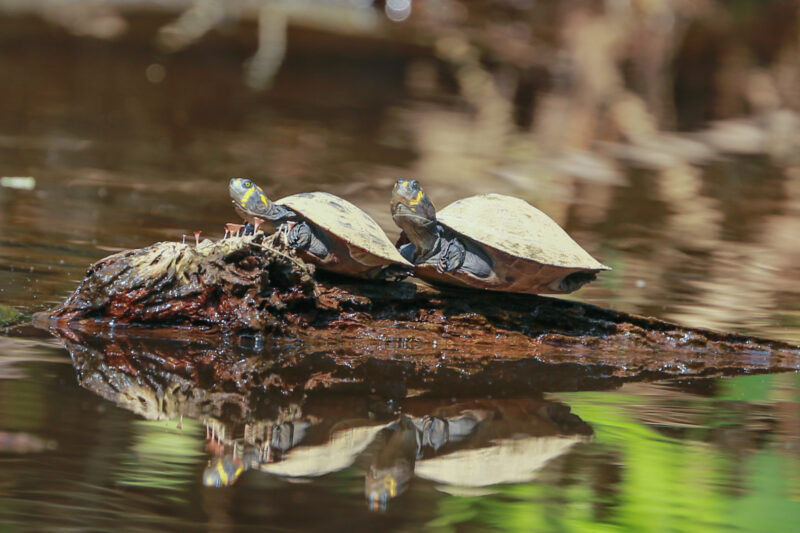
This is a stinky turkey. Technically, it’s called a hoatzin (pronounced like Watson), but stinky turkey is much more fun ![]()
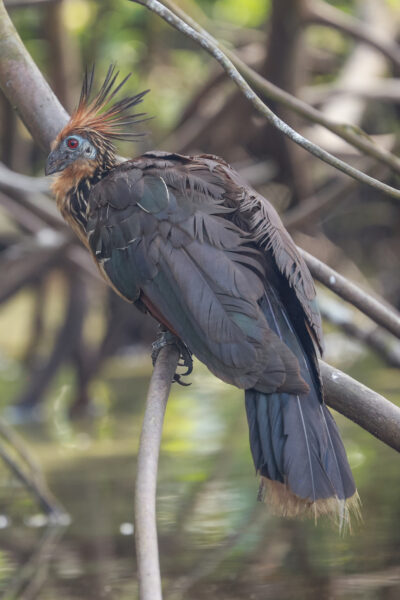
They are the only genus of their family and get the stinky part of their name due to the fact that they have several guts like a cow and ferment their food.
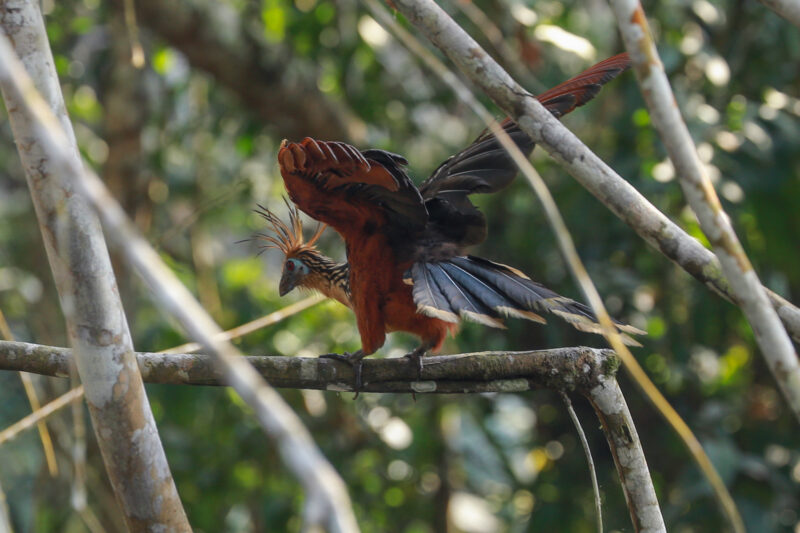
They are pretty much everywhere:
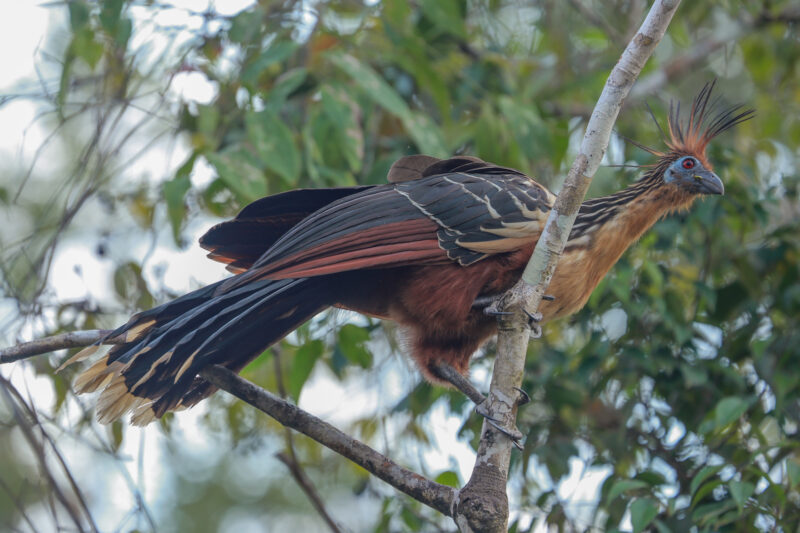
I think they’re pretty cool looking!
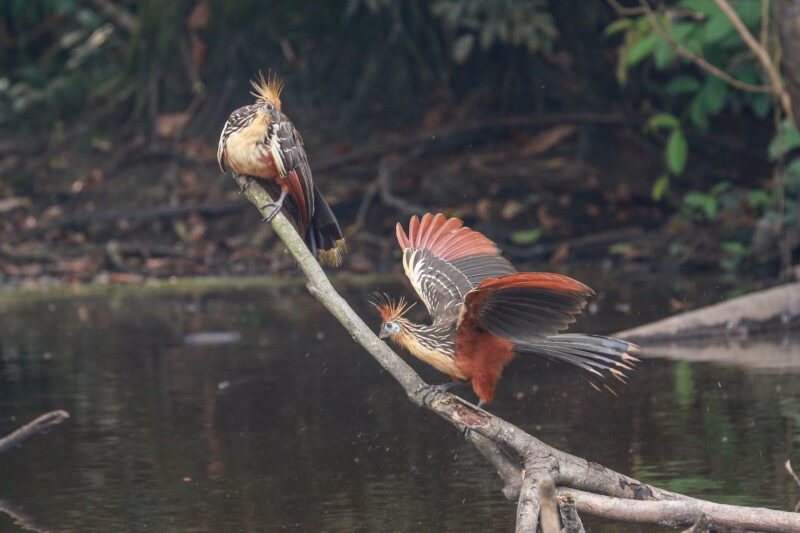
We spotted several more birds on our way back to the lodge:
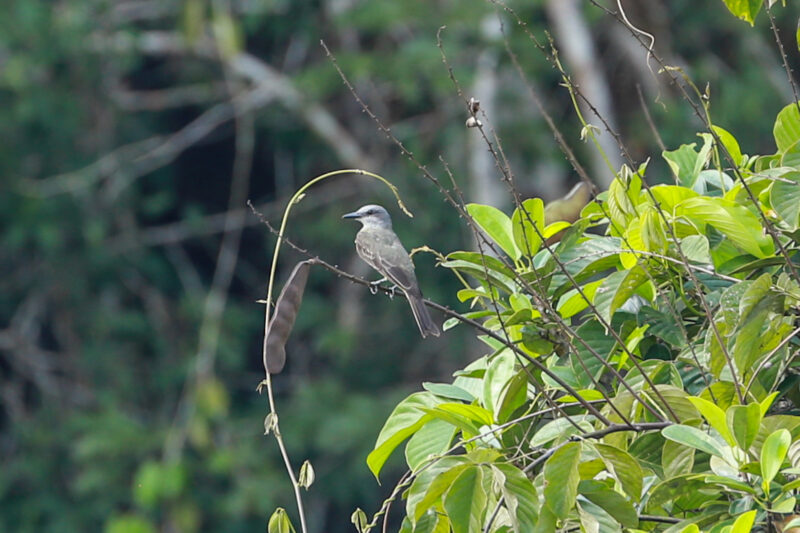
Limpkin:
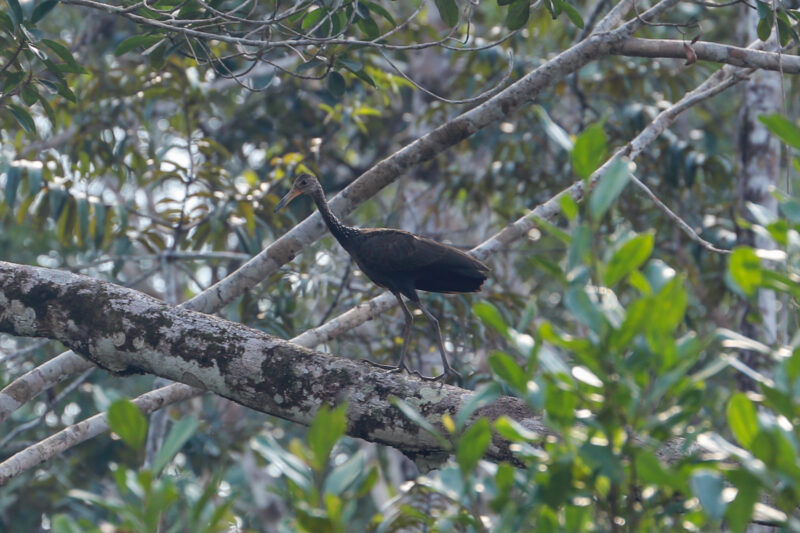
Anhinga:
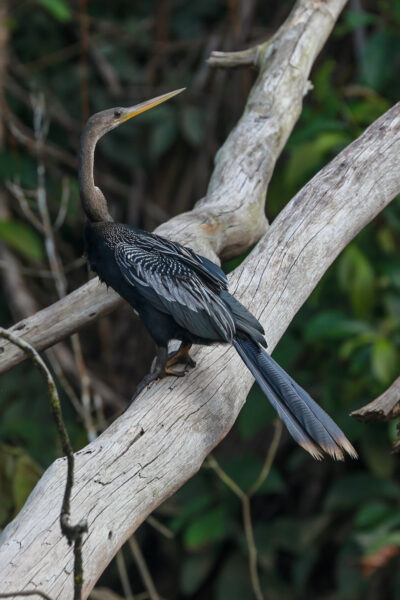
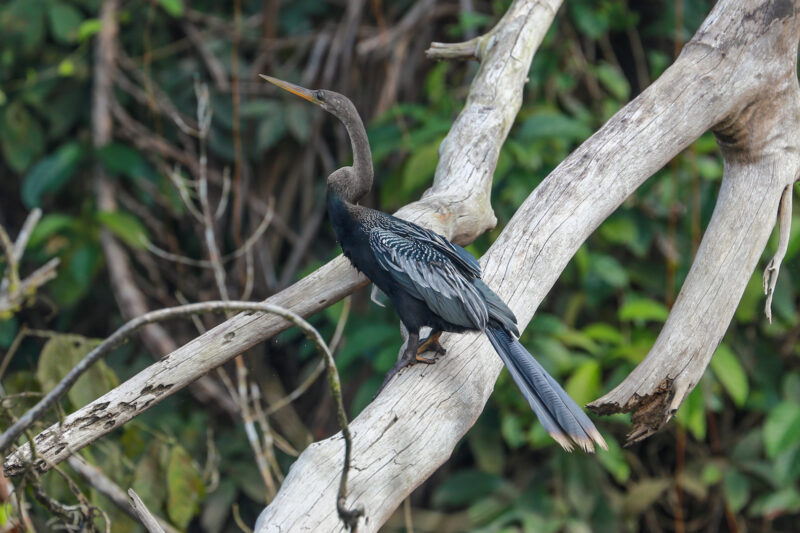
Black-capped donacobius:
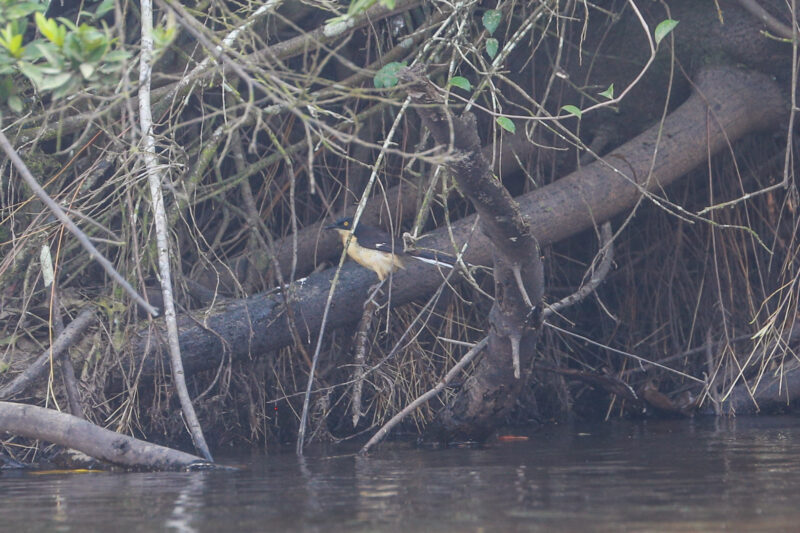
Osprey? I feel like his bill is too long but maybe it’s just the odd angle (it’s not a great shot):
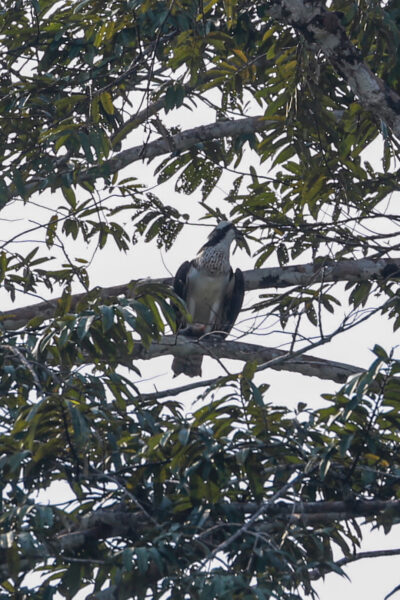
Greater ani?
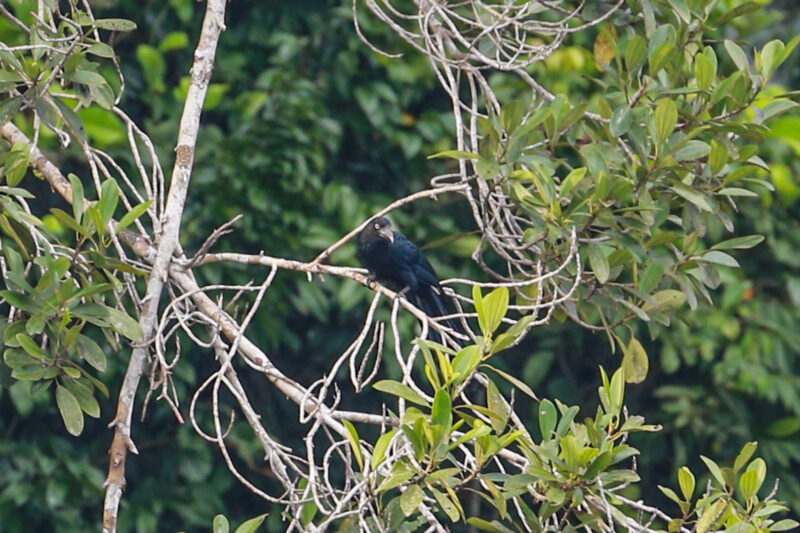
Maybe tomorrow will bring more birds in more photographable positions.
Back at the lodge, it was time to try fishing for piranha!

Skip caught the first one!

Look at those teeth! and red eyes!
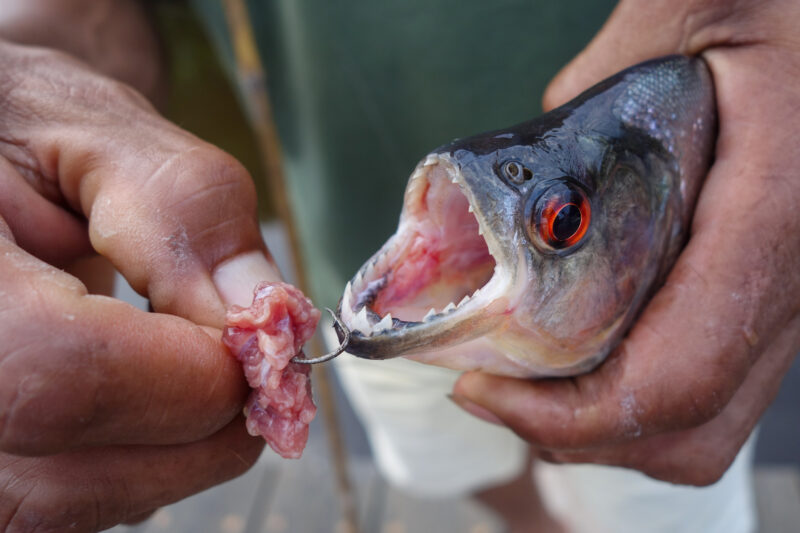
Bryan caught one too!
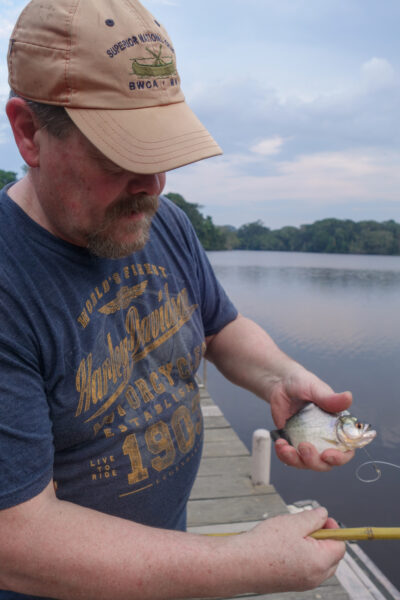
Jim caught a catfish!
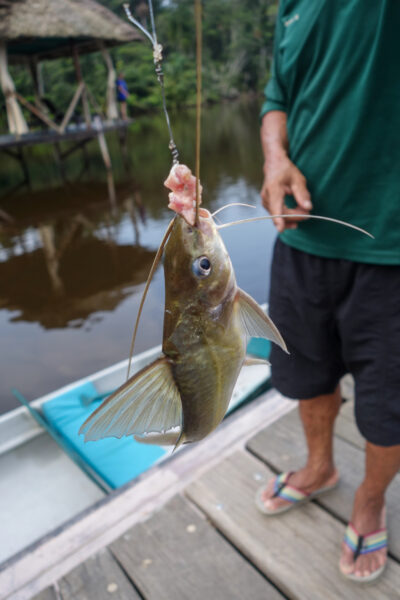
Isn’t he cute!?
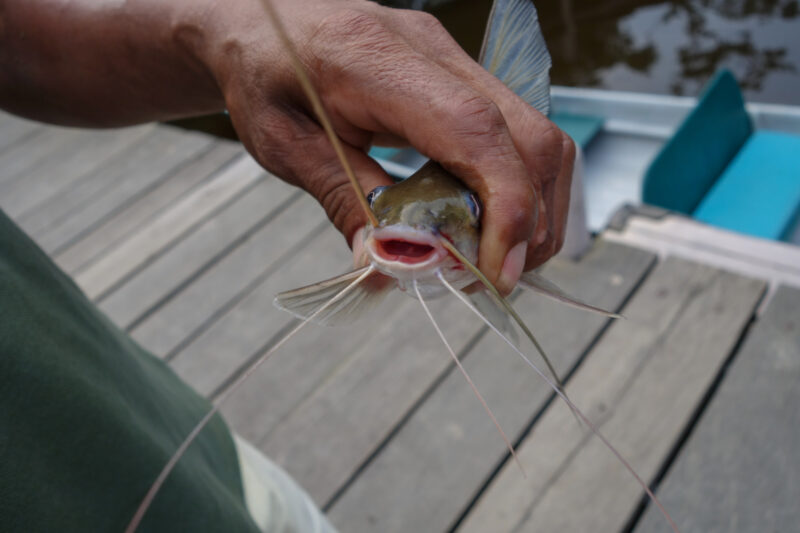
(yes, yes he is! it’s like he’s smiling!)